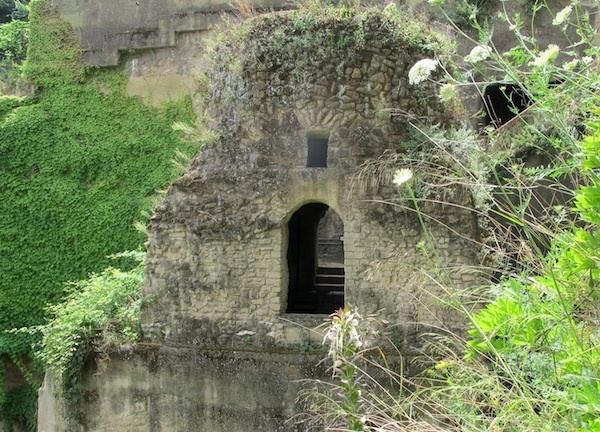 | ||
Similar Crypta Neapolitana, Grotta di Cocceio, Aqua Augusta, Macellum of Naples, Castello Barbarossa | ||
Virgil's tomb (Italian: Tomba di Virgilio) is a Roman burial vault in Naples, said to be the tomb of the poet Virgil (October 15, 70 BC – September 21, 19 BC). It is located at the entrance to the old Roman tunnel known as the grotta vecchia or cripta napoletana in the Piedigrotta district of the city, between Mergellina and Fuorigrotta. It is a small structure, with a small dome of rocks located at the top of the park.
Contents
History
The tunnel was built during the reign of Augustus connecting Neapolis (ancient Naples) to Pozzuoli and Baiae. The tunnel is over 700 metres (2,300 ft) in length and between 4 to 6 metres (13 to 20 ft) wide. The height varies from 7 to 30 metres (23 to 98 ft). Until the beginning of 20th century the tunnel could be used to travel from Naples to Baiae.
Virgil was the object of literary admiration and veneration before his death. In the following centuries and particularly in the Middle Ages his name became associated with legends of miraculous powers and his tomb the object of pilgrimages and pagan veneration.
At the time of Virgil's death, a large bay tree was near the entrance. According to a local legend, it died when Dante died, and Petrarch planted a new one; because visitors took branches as souvenirs the second tree died as well.
Virgil's death
When Virgil died at Brindisi in 19 BCE, he asked that his ashes be taken back to his villa just outside Naples. There a shrine was created for him, and sacred rites were held every year on his birthday. He was given the rites of a heros or hero, at whose tomb the devout may find protection and counsel (as from Orpheus' oracular head). Virgil's tomb became a place of pilgrimage for many centuries, and Petrarch and Boccaccio found their way to the shrine. It is said that the nearby Chiesa della Santa Maria di Piedigrotta was erected by the Church authorities to neutralise this pagan adoration and "Christianise" the site.
Presently, the tomb serves as a tourist attraction, and still contains a tripod burner originally dedicated to Apollo. There are no human remains in the tomb, however, as Virgil's ashes were lost while being moved during the Middle Ages.
